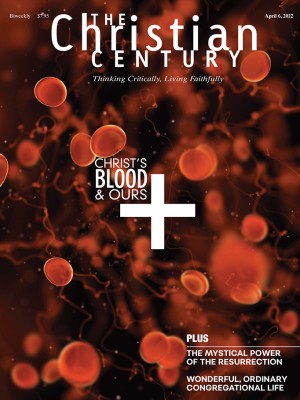April 24, Easter 2C (Revelation 1:4-8; John 20:19-31
Thomas might be the patron saint of a secular age.
Last year I made a new friend—even better, a new friend who is a new Christian. When I met Devon, she had been reading Paul and Paul Tillich on her own. To be sure, there’s nothing wrong with diving into the deep end. More of us should aspire to such spiritual and intellectual fervor. But it’s awfully hard to find your footing as a person of faith without the benefit of Christian fellowship. She needed someone with whom to talk and pray.
Meanwhile, so many of my friends moved away or took new jobs during the pandemic that I had a gaping hole on my dance card. I invited her to meet me for breakfast. Over oat milk lattes we leapfrogged over anything resembling small talk. Instead we talked about God: God’s beauty, mystery, and grace. I’d drained my mug when I announced that I really wanted to know what she thought about Jesus, but first I had to pee. On return I learned that Devon was deeply drawn to Jesus. She was uninterested in vague spirituality; she craved a robust Christianity.
Read our latest issue or browse back issues.
Still, I wasn’t surprised when a few months later I asked her what she thought about the resurrection, and her response was less than certain: “I . . . want to believe.”
Most of us are less than certain about our religious convictions these days. In A Secular Age, philosopher Charles Taylor writes that this intractable skepticism is part of the “malaise of modernity”; we live in a time in which one is “never, or only rarely, really sure, free of all doubt, untroubled by some objection—by some experience which won’t fit.” Theologian Andrew Root recently finished his trilogy sussing out the many implications of Taylor’s philosophy on faith formation, pastoral vocation, and congregations. I haven’t quite worked up the intellectual fervor to read Taylor’s brick of a book firsthand. (Like I said, more of us need more of what comes naturally to my dear Devon.) Root has been a superb companion as I try to make sense of why, despite having dedicated my life to God and God’s people as a minister of word and sacrament, my own creed is often a wistful desire to believe that is a mile shy of certitude.
I want to believe, but I disbelieve in spite of myself. It’s no wonder I adore the story of Thomas. Scripture is full of vividly drawn characters who ooze humanity, perhaps none more than Thomas. The dude is relatable. Anachronistic and eisegetical though it may be, I can’t help but think of him as the patron saint of the secular age (as well as the patron saint of FOMO). No matter that Thomas lived in a time still threaded with a sense of enchantment. His instinct was to require hard proof before assenting to a claim that was objectively bananas. Dead people stay dead, and it is embarrassing to believe otherwise. Only this story is asking us to do just that; it is “written so that we may come to believe that Jesus is the Messiah, the Son of God, and that through believing we may have life in his name.”
How does one come to believe—in God, in Christ, in resurrection—while snuggly ensconced in the so-called immanent frame? According to Root, this Taylorian concept is a “closed system; its constitution and maintenance make transcendence implausible.” Even if one experiences a flicker of “cross pressure”—the faint intimation that there must be more than the material, rational world—it’s not like God can actually show up. We are on the wrong side of a locked door.
But the disciples are on the wrong side of a locked door, too, and God actually does show up. Jesus comes and stands among them and exhales the Holy Spirit onto their stunned faces. Just as I long to believe in the resurrection, I long to believe that if Christ could penetrate an impenetrable wall to reconvene with his beloved friends, he can do it again with the impenetrable barricade of the immanent frame.
I think this is why I also love reading Revelation during Eastertide, when I am most ardently pursuing belief in the resurrection. The apocalyptic vision of Jesus rolling in on a cloud is even more bananas than the story Thomas is told when he gets back from taking out the trash. But in that final vision, no one will miss the moment. The immanent frame shall fracture, and every eye will see it.
I want to believe in the resurrection. And I want the risen Christ to return on a Monday morning, because it would be so delightful for it to go down when I’m out for breakfast with Devon. I can see it now, the cumulonimbus rolling in with its holy passenger. At first glimpse of his form we’ll break into joyous laughter—oh, my God, it’s true!—and knowing me, I’ll have to race to the bathroom. But I won’t miss it. No one will miss it.





